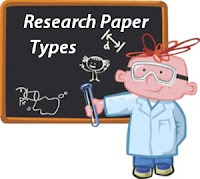Cancer is the uncontrolled growth and spread of cells.
There are many
different types of cancers that affect any part of the body. According
to the World Health Organization, lung, stomach, liver, colon and breast
cancer cause most of the cancer deaths each year.
Tumours can be classified as follows:
A variety of technical names to distinguish the many different types of cancers are used by physicians and scientists:
The transformation from a normal cell into a tumour cell is a multistage process, typically a progression from a pre-cancerous lesion to malignant tumours. The hallmark characteristics in tumour development are:
Cancer cells often invade surrounding tissue and can metastasize to distant sites. Invasion refers to the direct migration and penetration by cancer cells into neighbouring tissues. Metastasis refers to the ability of cancer cells to penetrate into lymphatic and blood vessels, circulate through the bloodstream, and then invade normal tissues elsewhere in the body.
Tumours can be classified as follows:
- Carcinomas arise from the cells that cover external and internal body surfaces.
- Sarcomas are cancers arising from cells found in the supporting tissues of the body.
- Lymphomas arise in tissues of the body's immune system.
- Leukemias are cancers of the immature blood cells.
A variety of technical names to distinguish the many different types of cancers are used by physicians and scientists:
The transformation from a normal cell into a tumour cell is a multistage process, typically a progression from a pre-cancerous lesion to malignant tumours. The hallmark characteristics in tumour development are:
- Uncontrolled cell proliferation
- Loss of apoptosis
- Angiogenesis
- Tissue invasion and metastasis
 |
Taken from Bhatia and Sklar. Nat Rev Cancer 2002
|
Cancer cells often invade surrounding tissue and can metastasize to distant sites. Invasion refers to the direct migration and penetration by cancer cells into neighbouring tissues. Metastasis refers to the ability of cancer cells to penetrate into lymphatic and blood vessels, circulate through the bloodstream, and then invade normal tissues elsewhere in the body.
A significant
proportion of cancers can be cured by a careful selection of one or more
therapeutic approaches, such as surgery,
radiotherapy, chemotherapy, and new treatments (targeted therapy:
inhibitors of angiogenic factors, biological therapies or vaccines):
The tumor markers
are substances produced by tumor cells and/or by other cells of the
body in response to cancer. Some are related to a single type of cancer,
although most of them are associated with two or more cancers.
Biomarkers can be used with diagnostic aims, to detect cancer in early
stages, as well as with therapeutic purposes, using them to plan an
appropriate therapy regimen or for follow-up to evaluate the patient's
response to treatment. However, so far no specific biomarker with enough
sensitivity and specificity has been identified.
A review of causes and treatment options for cancer can be observed in the following video:
- Learn the hallmark characteristics of tumour development.
- Familizarize yourself with the concept of tumour marker.
- Study the process of angiogenesis and metastasis as well as the main molecules involved.
- Understand the concept of circulating tumour cells and minimal residual disease.
- Be able to identify the main treatment approaches used in oncology.








































